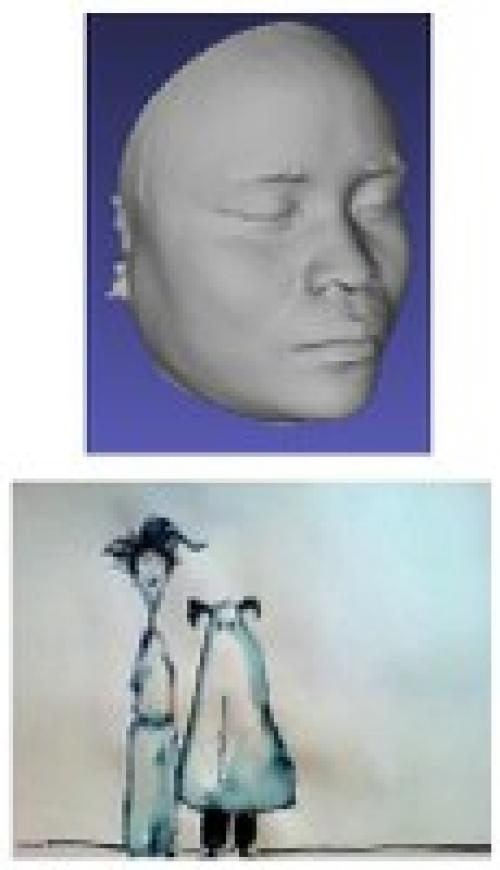
Le Liris en très bonne place aux challenges SHREC’11 et ImageCLEF 2011
Liris at Ecole Centrale de Lyon took part to the track on 3D face retrieval and recognition at Shrec 2011 contest. The objective of the contest is to evaluate the performance of search algorithms on 3D face models. The test database consists of 780 3D face models from 130 people. Many of these 3D models are very noisy, with holes, occlusions, among others. This year, four groups from France, Belgium and Netherlands took part in the challenge with 14 different runs. Liris submitted five runs of a method which is based on the detection of feature points on the 3D facial surfaces using the maximum and minimum curvature, and the characterization of these feature points by weighted histograms of differential quantities of multiple order. With a rank one recognition rate of 92% and 90% respectively, Liris was the first and second performance thanks to our third run and second one. They were ranked the second and the third performance in terms of recall and precision rates. In addition, unlike other methods submitted to the challenge, the runs submitted by Liris did not need any preprocessing and learning.
Huibin Li and Liming Chen are the members of Liris at ECL taking part to this contest. The paper describing and comparing all the methods submitted to Shrec 2011 can be found here.
Liris also awarded the second performance for their first participation at the ImageClef 2011 photo annotation challenge
The LIRIS lab participated this year in the "Photo Annotation" task of the ImageCLEF 2011 challenge whose aim is the automatic annotation of images according to 99 visual concepts, including scenes (indoor, outdoor, landscape, ...), objects (car, animal, person, ...), events (travel, work, ...), emotions (happy, fear, sadness, ...). For this purpose, a training set was provided to participants containing 8000 images from Flickr and their annotation (presence or absence in the image of each of the 99 concepts), their EXIF data and user tags. This training dataset was to be used by the participants to learn their classifiers. The evaluation of the classification methods proposed by the participants was performed on a test set containing 10 000 images. Each participant would then provide the results of visual concepts detected for each of the test images and a comparison with the ground truth was then used to assess the quality of the proposed methods.
This year, 18 groups from 11 countries participated with 79 runs. For their first participation, Liris achieved a 43.7% MiAP and was ranked the second best performance using a multimodal method according to a Selective Weighted Late Fusion (SWLF) strategy. This method combines the textual content through a new descriptor HTC capturing the relatedness of semantic concepts, along with visual content of low and mid-level, including in particular harmony, dynamism, esthetic qualities, etc. The performance achieved by Liris was just behind TUBFI, a joint submission from TU Berlin and Fraunhofer First, which achieved a 44,3% MiAP also with a multimodal model.
The following people took part to this challenge with Liris: Ningning Liu (ningning.liu@ec-lyon.fr), Yu Zhang (yu.zhang@ec-lyon.fr), Emmanuel Dellandréa (emmanuel.dellandrea@ec-lyon.fr), Stéphane Brès (stephane.bres@insa-lyon.fr) et Liming Chen (liming.chen@ec-lyon.fr).
CLEF 2011 web site : http://clef2011.clef-initiative.eu/index.php
